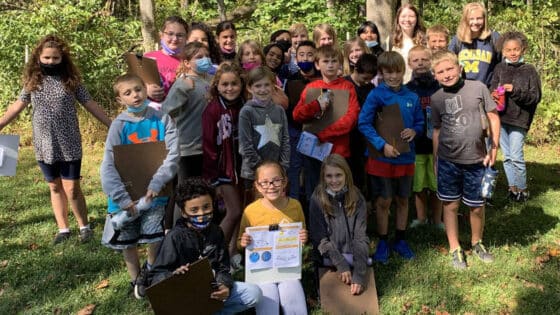Five Years Out: Three Weeks That Changed Lives
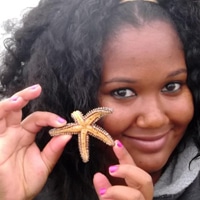
On July 7th, 2007, 12 high-school students set off from Belleayre Ski Resort in the Catskill Mountains on the journey of a lifetime. Three weeks later, exhausted, exhilarated, and malodorous, they walked into New York City’s Central Park to the applause of families, city officials, and startled onlookers.
They had hiked and paddled over 200 miles, through wooded wilderness, open water, and paved suburb, following the route of the city’s water from its sources in the Catskill Mountains to the reservoir in the center of Manhattan, from Mountaintop to Tap.
Five years later, we set out to find the students, the teachers who accompanied them, and the planning committee members who labored for months to make the trek happen, and to ask them what impact the trek had had on their lives.
Trekkers
Asha Armstrong, New York Harbor School
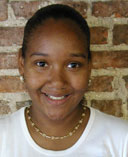
I am currently a senior enrolled in the semester-by-the-sea program at Stony Brook Southampton. I am also an environmental studies major with a marine science minor.
Sorry, Jamie, but I have combined the good and bad memories into great memories. One of the most profound memories is our visit to the tube tinker and our trip down the Esopus River. This is profound because, like a war wound, I still have a scar on my lower leg. Yes, brave ol’ Asha hopped out of the tube at the end of our float and scratched her leg against a rock. Now every time someone asks me how I got this scar, I am engulfed in trek memories.
The phrase by Marissa, “liquid gold.” Although the production of the aqueduct took away many homes and parts of cemeteries, some of the residents remained peaceful. When we asked Margaret [Smith Dolan] why she wasn’t mad that her house was taken away, she replied that she knew something good was going to come out of building the aqueduct.
The Mountaintop to Tap trek perked my interest in environmental studies. When I first started the trek, my goal in life was to become an oceanographer; I have changed my focus to environmental science with a focus in marine science. In addition, I would like to pursue a career in environmental education, primarily with youth, instead of oceanography.
Leydi Basilio, New York Harbor School
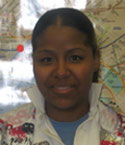
I recently graduated from SUNY Geneseo with a bachelor’s in communications, journalism media track. I chose not to attend graduate school immediately because I was not sure of the path I wanted to take. Thus, I decided to do a year of service with City Year, a nonprofit organization where we serve as mentors, tutors, role models and assist teachers in the classrooms to help bridge the educational gap in New York and help students graduate.
I am thinking about going into education now, and for life after City Year, I will be applying to NYC Teaching Fellows and Teach for America.
Memories of the trek:
I have lots of great memories from the trek. The one that sticks out the most is when I jumped in the river, encouraged by all the other trekkers who had already done it. I recall the water being icy cold, and I shivered even at the thought of jumping in. I was afraid to drown, as I did not know how to swim. However, I think that I was most afraid to trust the other trekkers, most of whom were still strangers to me. I looked around at everyone else on the other side and knew I had to jump in. I am and will always be a woman of risks. I love to challenge myself and be as adventurous as possible, even when I don’t know how to swim (yes, to this date). I felt an adrenaline rush and finally jumped in. Then under water, I felt my muscles tense, and the cold water felt like needles in my body. I lost it. I was drowning in deep — very deep — water. Suddenly, I felt warm hands reaching out to help me to the other side, and today I am very proud of myself for taking such a risk. I trusted each and every one of them, and our relationship blossomed from then on.
What it has meant for me?
The trek changed my perspective about NYC water completely. I was very happy I got the chance to engage in such a trip because it opened my eyes to a new world, a world beyond my neighborhood, something that not many NYC students have the chance to experience. Today, unlike then, I find myself drinking the tap water without any concerns because I know where it comes [from] and how it ended up here. I try to conserve water as much as possible. It kills me to see how much water is wasted, particularly during the summer when the fire hydrants are left open for hours, because I know the history behind it. So many families lost everything for us to have water, and I think that, out of respect, the least we can do is conserve that precious resource before it goes missing.
Natalie Bloomfield, New York Harbor School
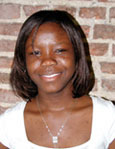
I am currently a junior at College of the Atlantic in Bar Harbor, Maine. After attending the Woolman semester in Nevada City, Calif., I knew I wanted to further my education in a small communal environment, where students and professors interact in a professional setting, and students seek answers and pose challenging questions that sometimes require research beyond what is being taught in classrooms.
My most memorable moment on the trek was the view of the valley from the top of Slide Mountain. It was breathtaking. I will also never forget Margaret Smith Dolan and the horrors she lived through as a child as the home of her family and other members of the Neversink Valley were taken by eminent domain to create a reservoir to supply NYC with clean drinking water.
After five years, I still remember the early morning hikes and Asha’s huge heart! She always made an effort to see to it that everyone’s team spirit was high. Every morning she started us off with a song to lift our spirits. I’ll never forget a whole day of hiking in rainy weather and the difficulties most of us faced while pitching tents in the dark. The transition in some of the personalities during the trek was also remarkable. At some point, no one cared about what they smelled like, which just shows that sometimes all it takes is a bit of getting outdoors to remind one of the things that are most valuable and that we can all do well with so little.
This trek helped me realize that not everyone has the opportunity I had to appreciate what’s in their backyard. Before this trek, I never once questioned where the water I drink came from; but after learning what so many people gave up in order for New Yorkers to have clean drinking water, I’ve definitely tried to show my appreciation by drinking more tap water and walking with a canteen, which reduces the need for buying bottled water. After all, many refer to NYC drinking water as “the champagne of tap waters” because it’s just that great.
Robert Loibl, Sidney High School
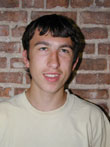
Where are you now, what are you doing, and how did you get there?
I am currently living In Los Angeles and working as developmental engineer for the United States Air Force at Los Angeles Air Force Base. After high school, I attended Binghamton University and received a B.S. in electrical engineering. I also completed a three-year ROTC program, which resulted in me being commissioned into the Air Force as second lieutenant.
What are some of your trek memories . . . both the good and the bad?
Oh boy, lots of good memories . . . the New Croton Dam stands out to me as well as the summits of the mountains we hiked. Some less than good memories (mostly funny, looking back), the bee sting that resulted in my hand being twice its normal size and losing my rain suit and wearing a garbage bag with arm holes instead.
What stands out most in your mind five years later?
Looking back, I find that even the hardships and setbacks we endured during the trip are good memories. I’m starting to really appreciate how great an opportunity the trek was for everyone involved. (How many high school kids get to be in a documentary?!) Sometimes I catch myself thinking back and wondering, “Did I really do all that?” It’s just surreal.
What impact did the trek have on you? How, if at all, did it change your life?
The trip definitely helped shape my opinions about the connection between both major parts of New York state. It also solidified my views regarding the environment and its conservation. I find that my experiences from the trek have been invaluable in understanding new and emerging issues — gas drilling being a major one.
One recommendation I would give to anyone reading this is to go out and experience where you live. I lived in upstate New York for most of my life, but I didn’t really experience it until I went to the Catskills to hike the mountains and to the Hudson to row down the river. That’s something that the trek gave me the opportunity to do, and I’d like to extend one last thanks to everyone who organized the trip and especially to those who participated in it.
Marissa Morton, Sidney High School

I am currently working in Norwich, N.Y., at Chobani Greek Yogurt as its product donation coordinator. I was living in Fredonia, N.Y., and attending SUNY Fredonia, but I moved back to the Catskill region after graduating in May with a Bachelor of Science in communication studies and a minor in visual arts and new media. I knew in high school I wanted to do something in the communications field, and I am so happy that I ended up at a job that I love in the field I studied.
My trek memories are a total mix of emotions. It sounds kind of corny, but it honestly opened my eyes to a lot of things, and I think it changed who I am today. I remember feeling a sense of accomplishment, sadness, happiness, and the trek helped me mature. I believe it motivated me to be the best I could be and helped me go after my dreams. My favorite memory was when we sat in the middle of the forest by ourselves, with no clocks or cell phones, and were asked to reflect on how we felt. I remember feeling so relaxed, and I knew right then that I was where I wanted to be. I appreciate the quiet and now look at nature in more detail than I ever did before that moment.
The thing that stands out the most in my mind after five years is the friendship I built with Leydi. I was able to visit her last August and am thankful that I was able to meet the people I did. It is amazing that two people who grew up in completely opposite environments can have so much in common. I have learned to meet every person with open eyes and an open heart because he or she could end up being a beautiful person. Even though there was some fighting during the trek, I can honestly say that I loved every person by the time we left. I will always carry a special bond with my fellow trekkers.
The trek honestly changed my life. I appreciate things I never did before like . . . water, ha ha. It is something I will carry with me the rest of my life. One of the biggest impacts was that it gave me inspiration in my art. I always loved nature, but being able to hike mountains and experience it first hand made me a better person. I still tell stories about when I got home and went to the doctor, both my feet were broken from the impact of walking on pavement and about how we got stuck in the pouring rain rowing down the Hudson, and I brag about how we were able to walk down into the old aqueducts.
Thank you for the life-changing opportunity Stroud Water Research Center was able to give me. There isn’t a day that goes by that I don’t think about it at some point.
Sarah Pate, Sidney High School

Where are you now, what are you doing, and how did you get there?
I am currently studying psychology and neuroscience at SUNY Albany, working on my undergraduate thesis in psychology to graduate with honors. I took a year off after high school and studied abroad in Debrecen, Hungary. After returning, I started school and became very interested in biology and psychology. I’ll be graduating this year and hopefully find an internship, which will help me gain admission to a graduate program in clinical psychology. From there I hope to get into forensic psychology and addictive behaviors.
What are some of your trek memories . . . both the good and the bad?
My favorite times during the trek were the sights and views from the mountain. The large valleys from the top of the peaks in the Catskills were absolutely gorgeous, and rowing along the Hudson brought new things to see as well. All the people we met were fascinating and helped me to learn so much about not only the water system but [also] the New York state community as a whole.
The bad, which in retrospect could have been worse, was probably the time when our boats flooded in a storm on the Hudson. We all rowed against the wind and the tide as the rain poured into the boat faster than we could pump it out. Despite persistence and teamwork, we ended up having to be towed by the tugboat and then ended up having to swim to the banks. It was a little disappointing, but a good memory to have. It was a good adrenaline rush and exciting as well.
What stands out most in your mind five years later?
What stands out most in my mind after five years are the people and the appreciation for our environment. Quiet times hiking or resting at night caused me to notice the little things — to notice what the world has besides shopping malls and highways paved through the forests. I believe that will always stick with me. I also find myself wondering what the others from the trek are up to now — where they’ve been and what their plans are. I would love to actually have our happy little dysfunctional family get together again so we could all share stories and catch up. Maybe even camp out for a night!
What impact did the trek have on you? How, if at all, did it change your life?
I would have to go with my previous statement about the environment, as well as a deeper understanding for people from different areas. Physically living with and talking to others from other cultures and walks of life was a great experience that I will always carry with me.
Sarah Place, Sidney High School
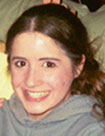
To answer the questions, I am currently living in New Jersey and am almost finished with my B.S. in psychology. I started college with the intention of obtaining a B.A. in musical theater, but I felt that was not practical enough, and although I still enjoy acting, I can pursue it even if I do not go to school for it, and I will also have a practical degree to fall back on. I decided to pursue a B.S. in psychology because I realized how much I like to help people, especially troubled adolescents and young adults who may have had a rough life or do not have a positive role model in their lives. Besides pursuing my degree and acting on the side, I have been practicing photography quite regularly for the past five or so years and am working toward establishing myself as a fine arts photographer specializing in conceptual portraiture, in the mold of Brooke Shaden and Kristy Mitchell. I hope through my photographs to inspire others to keep being creative, use their imaginations, and reach for the stars.
The trek seems like it happened so long ago. I feel like I was just a kid back then. I suppose five years is a long time, but in retrospect it really wasn’t all that long ago. When I look back on the trek, I can remember so many separate memories as if they are scenes from a movie. I remember most vividly hiking through the mountains in both cold misty rain and dreaded heat, having our tent flooded by a passing rainstorm while we slept, sailing down the Hudson feeling so incredible and free, staying the night by a shipyard and listening to the students at West Point chant from the other side of the river, making the most ridiculous concoctions for dinner and actually liking it, walking down abandoned train tracks, singing folk songs with Molly Mason and Jay Ungar, staying in the basement of a giant old house in the Bronx and swearing it was haunted, and finally arriving in Central Park where all our families and friends were waiting to see us. I remember so much about those weeks and am remembering even more just writing all of this.
After all the time since the trek, I find that what stands out most to me are all the different times we shared together, good and bad, and how we always got through it. We worked as a team and, despite whatever conditions we faced, we always found a reason to smile and laugh at the end of the day.
I can say with great confidence that the trek changed my life. It taught me so much — from perseverance to teamwork to not taking myself too seriously. I feel that after the trek I have more courage to challenge myself and my limits, and if I ever have doubt, I many times find myself saying in my mind, “Hey I climbed three mountains and rowed 40 miles; I can do this.” Not only did it change me in those respects but it also helped me to take my passion for photography more seriously. At the time of the trek, I had the intention of becoming a photojournalist, and I remember that being one of the reasons I applied to go on the trek — because we were to document our journey through photographs. Taking photos every day felt incredible to me, and I found myself constantly trying to achieve a “perfect shot.” It was so much fun to me, and after the trek, I just ran with that feeling and began to teach myself about photography and develop my skills through a ton of practice and experimentation.
All in all, the trek was an incredible experience that I am so happy to have been a part of [it].
Jeriel Stafford, New York Harbor School
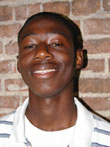
Right now I am in my senior year of college, pursuing a double major in applied math and statistics and economics. I got here through a lot of hard work and persistence because during my four years here at Stony Brook University, there have been different situations that could have prevented me from getting my college degree. I am also now part of MALIK Fraternity Inc. and the treasurer of Stony Brook’s one and only step team, Cadence.
Some of my favorite trek memories are when we climbed the first mountain. It was the first time I got to experience that, and to me it was just amazing. Also meeting the DEP personnel. My best memory though would have to be going tubing in Esopus Creek; that was a lot of fun. Seeing the New Croton Dam and reservoir was also an amazing thing to experience — especially with the picture that I took, so spectacular. The only bad memories that I remember would be the little arguments here and there that we had among the trekkers.
What stands out to me the most was that I got to experience a whole different world from what I was used to. Coming from the island of Grenada to living in the city of New York to living in the woods, all are different worlds, and I got to experience them all. I got to learn a lot of things that many people do not know at all. It was amazing, and I would definitely love to do it again.
The trek definitely made me more aware of the environment and more eco-conscious. Ever since, I have started educating as many people as I can about where we get our water and that it is, in fact, even better than bottled water. It really is a challenge.
Teachers and Trek Leaders
Capt. Tizoc Gomez, New York Harbor School
I’m still teaching at the New York Harbor School. I am head coach of the rowing team and co-teach the vessel operations class. I obtained my captain’s license in 2010 and am one of five captains at the school. I also helped develop the curriculum for the Harbor School’s engineering curriculum and am one of the school’s waterfront directors. Currently, a co-worker and I are involved in a project to renovate an old Coast Guard buoy tender to run off green energy, including solar, wind and biodiesel. We will finish the first phase of renovation by June and will promote clean fuels with students as the official crew in the vessel operations class. I devote my spare time to planning expeditions on the Hudson River for the rowing team. In the near future, my rowers will embark on a weeklong expedition through the Erie Canal.
Recently, the Discovery Channel hired me for a Neolithic boat project in Wales, where I led a group of 13 paddlers through the Bristol Channel, recreating a possible 2,000-year-old-voyage. The craft, named Holgar, was designed and built on the lines of three ferryboats that were discovered. In addition to the 13 rowers, Holgar carried a two-ton bluestone, marking the first successful crossing of the Bristol Channel testing the theory of bluestone portage over water.
I think about the trek all the time. Most of my expedition planning goes back to the strategies I developed for planning its on-water portion. I appreciated the opportunity to experience the connection the upstate and downstate share. When I talk about the trek, I still get looks of amazement as I describe how 12 students followed the water to the big city. To this day, there is always a cold pitcher of tap water in my fridge.
Ed McGee, Sidney High School
Greetings. I’m still at Andes. I remember food shopping when the students had to figure out what to buy within their budgets. I loved the part in the Catskills. I still see Wes and Todd. The trek made me understand how we forget as teachers what it is like to be young adults. I think a lot of teachers don’t remember the parts of their lives in high school.
Jennifer Ostrow, New York Harbor School
Where are you now, what are you doing, and how did you get there?
I’m the founding principal of a new middle school, the Urban Assembly Unison School. I left the Harbor School in 2010 to be the director of new school development for the Urban Assembly*, and I fell in love with this particular school project. I’ve jumped back in the water with two feet!
What are some of your trek memories . . . both the good and the bad?
Many great memories: I have a picture of Gabe eating lunch on the top of Cornell or Wittenberg Mountain in my office. That was a highlight. And when Sean and others volunteered to get up early, walk back miles, and carry heavy water bottles for the group, I was so proud of them. Also, a night in the backcountry, pouring rain, and my students brave and unconcerned about their wet sleeping bags. Finally, a daylong journey driving an antique tugboat from the South Street Seaport to Kingston with Aaron, Murray, and Tizoc to deliver the gigs for the rowing portion of the trip. Amazing.
What stands out most in your mind five years later?
I’ve rarely been prouder of a group of kids than I was on that trip.
What impact did the trek have on you?
It reinforced my belief in experiential education and furthered my understanding of the watershed.
*The Urban Assembly Unison School is a public middle school in Clinton Hill, Brooklyn, which is designed around the structured, standards-based progressive Learning Cultures instructional model developed by NYU Professor Cynthia McCallister.
Todd Paternoster, Sidney High School
Where are you now, what are you doing, and how did you get there?
I resigned from teaching the year after the trek, as I was disillusioned about the true art of teaching. Realizing the true educational experience that the trekkers experienced made me re-evaluate the current state of education in our country, and I became quite frustrated with the system. At the same time, I began studying solar energy and tried to incorporate solar into my curriculum. Then I decided to get into the solar industry, as I felt I could have a much larger impact directly, instead of dealing with all the confinements of public education. So, I left teaching and joined a solar company (National Solar Trainers), where I developed a national solar training program and was able to bring my teaching skills to the private sector by training several thousand professionals in the proper design and installation of solar systems. Currently, I am a private consultant for solar thermal and have recently co-authored a bestselling textbook: Solar Hot Water Fundamentals: Siting, Design, and Installation.
What stands out most in your mind five years later?
How daunting the trip seemed beforehand and how easy it seemed afterward. Also being part of an experience that can inspire students to that degree is my proudest achievement. I occasionally see a photo of the trek, and it brings a smile to my face, knowing that I helped make it happen. Immediately after the trek, we at Sidney held a showing of the [documentary] film for the entire student body, and afterward the students gave a PowerPoint to the school about the importance of preserving our most precious resource. We also had donated to us 500 reusable drinking bottles, which we handed out to every kid in school. The trek inspired many more than 12 students; it inspired hundreds.
What impact did the trek have on you? How, if at all, did it change your life?
The trek forever changed my perspective of what true education is, and should be, all about. It helped me become a better parent, and to solidify my understanding of how we are all connected, which is especially important in this day and age. The importance of clean, fresh, and abundant drinking water is of the utmost importance now, and the trek helped me understand this. I have become an advocate of clean water, and as an anti-fracking activist, I try to share my perspective and knowledge with the broadest group of people I can. The trek really helped me develop and nurture these sentiments. Sidney is currently a hotbed of fracking politics, and it is sad that five years ago six of our students trekked hundreds of miles to spread awareness of the importance of clean, fresh drinking water, and now our own supply of clean, fresh drinking water is likely to be jeopardized.
Sara Scott, New York Harbor School
Where are you now, what are you doing, and how did you get there?
I am currently living and working in my home city of Rochester, N.Y. After “retiring” from classroom teaching in 2008, I took a position as senior instructor with the Project Green Reach (PGR) program at the Brooklyn Botanic Garden (BBG). In my position as senior instructor, I was responsible for providing horticulture/botany education to K-8th grade Title One classrooms. In addition, I managed the PGR summer garden program, which allowed me to expand on my urban agriculture experience and gain more knowledge/experience related to teaching in “non traditional” settings.
My experience with urban agriculture at both the Harbor School and BBG led me to apply for the University of California at Santa Cruz’s Apprenticeship in Ecological Horticulture. I was accepted into the intensive program and spent six months living, working, and growing in the beautiful landscape/climate of Santa Cruz. I completed the program with a certificate in ecological horticulture, a deeper love of hand-scale agriculture (in my mind this translates to fewer than two acres), and an aching to connect my training in agriculture with my passion for working with youth.
After much soul searching I moved back to Rochester in the fall of 2011 and took a position as farm manager and lead educator with a small nonprofit in the city. I left that position in June 2012, due to my ethical and moral concerns over financial activities and overall organizational mission. My experience at this nonprofit has inspired me to “take the leap” to start my own righteous urban agriculture and youth development project here in Rochester. I am currently working more than full time on various farming and food projects as I begin to lay the foundation for a mission-driven, youth-focused, community-engaged nonprofit or social enterprise (linked with an ethical- and community-committed for-profit).
What are some of your trek memories . . . both the good and the bad?
The names and exact locations/stops on the trip have slipped my mind, but the scenery is still captured in my mind’s eye. Some of the memories that have stuck with me since the trip ended include:
- Sean Soto being paranoid about tick bites and conducting nightly tick checks with just a flashlight and moonlight.
- Swimming in a beautiful water hole — realizing that friends downstream would be drinking that same water in the near future. Also, having Harbor School students jump off rocks into the water (some of them for the first time in their existence).
- Witnessing some of the friendships that formed between upstream and downstream students.
- Dancing at Ashokan!! So much fun!
- Taking the subway after three weeks on the trail — all of us wearing our big backpacks, hiking boots, stinky clothes! What a total shift in reality from walking in the woods to riding the NYC subway.
- Arriving in Central Park to loved ones, supporters and family, everyone huddling together for one last group hug — and the whole group toppling over from excitement.
- Sleeping on a sailboat on the Hudson River (I think that was my favorite sleeping situation).
What stands out most in your mind five years later?
It’s simple really — but what an amazing feat it was to gather together so many people, resources, support, etc., and pull off a three-week trip that covered so many landscapes and so many miles. It really was a historic trip — which blows my mind every time I think about it.
What impact did the trek have on you? How, if at all, did it change your life?
One of the biggest impacts the trek had on me is that it made me love my students even more than I already did love them. I do not think that I was ever more proud of my students than I was during and after the MTT trek. It really solidified for me that a lot of the stereotypes about urban youth (and their abilities or shortcomings) are simple-minded and short-sighted.
In addition, participating in the MTT made me realize that my place as an educator was not in the classroom — but that my true passion for working with and educating youth must take place in a nontraditional, experientially based setting.
Trek Planning Committee
Aaron Bennett, Catskill Center for Conservation and Development
Where are you now, what are you doing, and how did you get there?
I now work for the Ulster County Department of the Environment as deputy coordinator, where I have been for two years. After the trek — in December 2009, I left the Catskill Center, and in February 2010 I worked part-time for Catskill Mountainkeeper as their high peaks director (until November 2010).
What are some of your trek memories . . . both the good and the bad?
Helping to plan the best and safest route through the Catskills, while fun, was very hard. Nothing seemed as perfect as I thought/hoped it would be. I really wanted to make it so they could manage without a car from Denning to the waterfront in Kingston.
Although I did not hike along with the group, I met them several times, most memorably on top of Wittenberg Mountain with Tom Alworth and Ben Murdock; we carried as much water as we could pack up to this prominent peak. The views were stunning, as the group was able to see the Ashokan Reservoir for the first time after dealing with rain for the first two days.
Putting in the leaf packs in the East Branch Neversink River three weeks ahead of the trekkers’ arrival and finding and analyzing them with the group on the first day of the trek!
What stands out most in your mind five years later?
Their arrival in Central Park. I made the trip down to welcome them, and seeing the parents hug their kids was so special. Additionally, seeing the upstate and downstate students introduce their new friends to their parents and siblings was really quite touching. The large pileup at the end (before everyone left for home) was memorable as well!
What impact did the trek have on you? How, if at all, did it change your life?
It made me realize the power that people who care about something — in this case the NYC water supply system — can have. And to put that power and energy to use to educate and inform others — through the journals, the exhibits, and school assemblies, and the movie — is nothing short of amazing. To have a Boy Scout troop from the Town of Olive do a similar trip a few years later and have support from the community and some of the partners from the original trek (like the DEP and the Catskill Watershed Corporation) is wonderful to see. I hope many more can come to fruition.
Kim Estes-Fradis, New York City Department of Environmental Protection
Did I tell you that this is a wonderful idea? It is!
One thing I think about is how we were able to pull off the summer of 2011 Boy Scout watershed trek because of our experience with the original Mountaintop to Tap trek.
Murray Fisher, New York Harbor School
I was having a delicious dinner the other night with a friend who had brought lots of great vegetables from a farm in the Catskills . . . Turned out it was Wes’s farm! So I know Wes is running an amazing farm and working to preserve the Catskill Mountains!
Where are you now, what are you doing and how did you get there?
I am now the president of the New York Harbor Foundation, a nonprofit organization that serves the students of the New York Harbor School by creating, managing, and funding programs that help the school meet its ambitious mission: to prepare students for success in college and careers through restoring their local marine environment.
What are some of your trek memories . . . both the good and the bad?
My favorite memory was sailing down the Hudson through the northern gate of the Hudson Highlands with Asha at the helm in a nasty storm. She was so cool — unafraid, soaking wet, eyes on the water, keeping us on course. Behind us the tugboat Decker towed one of the gigs that had stopped making progress against the crazy wind and rain. I also loved getting in inner tubes near Constitution Marsh with Sean Soto and Gabe and playing in the river just like I remember doing when I was a kid in the James River in Virginia, only this time massive container ships were passing by. The juxtaposition of nature and commerce and recreation couldn’t have been more clear or palpable . . . So much to ask of a river to do well by all those needs — but she does!
What stands out most in your mind five years later?
I wish I had been on the whole trip. I only came in for a couple of days and didn’t get to know everyone or experience it the way others did. I was like a trek tourist. I’ll also never forget learning a lot about leading from Wes. I really liked how he minimized his own presence to force the students to be more responsible and to enable the group to mature together.
What impact did the trek have on you? How, if at all, did it change your life?
The trek reinforced my love for the Hudson River and the Hudson River Valley. I had moved to New York City to work on the Hudson, but I left it to be in New York City. Many years apart from the actual river was hard on my soul, and a couple of days getting to know her again was mighty good food for keeping going strong on the work I do now — connecting young people to their local marine environment.
I sincerely wish we could do the trek every year. We worked so hard to plan this one, and I hear rumors that there might be others happening, so I’d like to be in touch about keeping the trek alive and giving young people the responsibility for communicating the importance of watershed knowledge and understanding, particularly in this city where our water is so precious and has traveled so far!
Christina Medved, Stroud Water Research Center
Where are you now, what are you doing, and how did you get there?
Still at the Center. Since MTT, I’ve coordinated the education programs on the Schuylkill Sojourn and coordinated another trek on the Brandywine River.
What are some of your trek memories . . . both the good and the bad?
I remember the challenge it was to get journal entries and photos uploaded to the website every day. Though we all figured out the best way to do it — the folks not on the trek, who were working with the trekkers on any particular day, would take a photo of the journal page and email it to me to upload here. I also remember the ah-ha moment a few days into the trek when we realized that not one of the students from the Harbor School was born in the U.S. They told us stories from their homelands where the water really isn’t safe to drink and how they came to the U.S. assuming it was the same here. I can still here Jeriel saying, “I’m going to tell my mom to stop buying bottled water.” It was a challenging trek for everyone, and the beauty of it is that they all hung in there for three weeks and encouraged each other to get through it. They were so proud of themselves at the end of the trek.
What stands out most in your mind five years later?
That this trek actually happened and that the students’ journal and photo exhibit was so welcomed in NYC and that it’s still on exhibit at the Center five years later. Also, after the first night of camping, hearing Sean Soto saying he couldn’t forget about the stars he saw the night before. And I think it was on day two that Wes took everyone to this incredibly beautiful, crystal clear, blue pool along one of the Catskill creeks, and everyone jumped in, one at a time. The trekkers had such a good time with that.
What impact did the trek have on you? How, if at all, did it change your life?
I realized that, with good partners, anything can be accomplished; and it was with this trek. The collaborations and the connections everyone had were like long tentacles connecting so many different people along the NYC watershed. This trek would not have been possible without those dedicated committee members!
John Schwartz, New York City Department of Environmental Protection
Where are you now, what are you doing, and how did you get there?
I am still working at NYC DEP in Kingston, although I was promoted a few years ago to the position of section chief, and so now I have greater responsibilities for additional watershed programs.
What are some of your trek memories . . . both the good and the bad?
Good: I vividly remember bringing the trekkers some bottled water for lunch one day and having them unanimously decline because they already had water in their own reusable water bottles. That was a lightbulb moment for me, when I realized that the trekkers had not only learned something but were willing to act on that knowledge — powerful stuff. I also remember, in broad terms, the incredible sense of commitment and dedication and perseverance the trekkers displayed in the face of adverse weather conditions and other obstacles throughout the trek; they were not just trekkers, they were troopers! I thought the closing ceremony in Central Park was fantastic and memorable. I also liked being nicknamed “Johnny Dep” — that was cute. Bad: The sheer amount of work that it took to make this happen, and how a lot of the planning came down to the wire in some instances.
What stands out most in your mind five years later?
The scope, scale, and magnitude of the trek itself and the sheer fact that all these people actually hiked, boated, and camped their way from watershed to the city — wow!
What impact did the trek have on you? How, if at all, did it change your life?
The trek was such a positive experience, but it was unique and not something that can be feasibly done every year or that often. However, last year (2011) a Boy Scout troop from Ashokan approached DEP about conducting a similar trek to commemorate the 100-year anniversary of the troop. Surprisingly, this second trek was pulled together in less than a year, in large part because we had the experience of the 2007 trek to pull from and also because many of the same players were involved in both treks. So that shortened the learning curve. Because of my role in helping with the 2007 trek, I was asked to oversee the 2011 trek in its entirety, and it turned out I was nominated for (and received) the honor of being DEP’s employee of the month for August 2011. In addition to this personal recognition, I also have a much greater appreciation for what both sets of trekkers had to do in order to complete the journey — not just the trek itself, but the emotional and physical preparation.
Bill Wegner, Riverkeeper
Where are you now, what are you doing, and how did you get there?
I’m still the staff scientist for Riverkeeper, reviewing watershed development projects, fighting fracking, and monitoring NYC DEP for compliance with the Memorandum of Agreement and watershed rules and regulations.
What are some of your trek memories . . . both the good and the bad?
Good: the photo display documenting the trek, lunch with the trekkers at Riverkeeper’s Tarrytown office, reading daily email diary entries from the trekkers. Bad: lots of effort to organize the trek — meetings and conference calls.
What stands out most in your mind five years later?
Meeting up with the trekkers for lunch at Riverkeeper’s Tarrytown office and listening to their stories.
What impact did the trek have on you? How, if at all, did it change your life?
It didn’t change my life, but it gave me a shared sense of accomplishment when the students achieved their goals.



